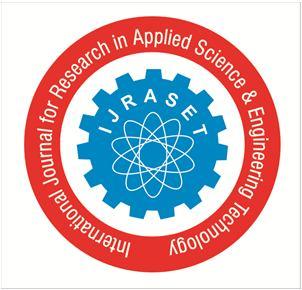
2 minute read
A Web-Based Platform for Predicting Student Careers using Machine Learning with Learning Resources for Computer Science Domains
from A Web-Based Platform for Predicting Student Careers using Machine Learning with Learning Resources
by IJRASET
Parth Lokhande1 , Yash Nayakwadi2 , Manali Umardand3 , Vedant Araj4, Prof. Dheeraj Patil5
Department of Information and Technology (Sem 1 2022-23) Nutan Maharashtra Institute of Engineering and Technology (An Institute affiliated to Savitribai Phule Pune University)
Advertisement
Abstract: A web-based application designed to help students and enthusiasts learn computer science fundamentals, where they can test themselves on basic computer science and domain-specific questions which will help them to know their strengths and weaknesses. They can also receive suggestions and roadmaps for their preferred career path. Advanced Machine Learning techniques are used in this application. These learning resources can assist and guide students to pursue various domains according to their affinity and preference.
Keywords: Predictive Classification, Career Development, Data Analysis, Aptitude Test, Career Roadmap, Job Role Exploration
I. INTRODUCTION
In today's fast-paced digital world, where technology is advancing at an exponential rate, choosing the right career path can be a daunting task for students. With numerous career options available, students often find it challenging to make informed decisions and to find learning resources in one place. To address this issue, we present an online career prediction system that uses skill assessment tests and machine learning techniques to suggest a suitable career domain for students, along with learning resources to pursue their interests. This web-application will focus on domains in the software industry and computer science. Our system provides students with an interactive platform that allows them to take skill assessment tests in different subject areas, including computer fundamentals, networking, programming, database skills, and more. The tests are designed to evaluate students' knowledge in these subjects and provide them with a score based on their performance. Using machine learning algorithms, we analyze the test results and suggest a career domain that aligns with their strengths and interests. To further assist students in their learning journey, our system also provides links to study resources for the subjects covered in the tests. Additionally, we will offer links to specific career domains along with their learning paths, enabling students to explore and learn about potential career options.
II. LITERATURE REVIEW
In the research paper titled “Need for Study and Career Counseling in Computer Science”, The paper highlights the significance & impact of study & career counseling for computer Science Students. The difficulties & challenges the students face when trying to advance in this field are discussed. The counseling has benefits like developing crucial Skills for their Paths. Overall, the authors advocate for increased importance of counseling to help students make informed decisions & succeed in their field.
The research paper titled “"Career Development: The Use of Aptitude Tests" by S. S. Asnani and S. P. Singh” discusses the value and need of aptitude tests in career development for the students, including its part in helping the students to find and recognize their strengths and weaknesses, selecting the suitable career paths, and develop the necessary skills for advancement in the said career path. The authors also argue the challenges associated with the use of aptitude tests, such as reliability, validity and test bias and recommend that the aptitude tests be held along with other career advancement tools such as career counseling.

III. METHODOLOGY
A. Web User Interface
The Web UI will help the user navigate to various pages of the web application, they can visit the fundamentals aptitude test page where they can give the test to check out which domain, they are suitable for. They can head over to the learning resources tab where they can go through various learning resources for different subjects and technologies.




